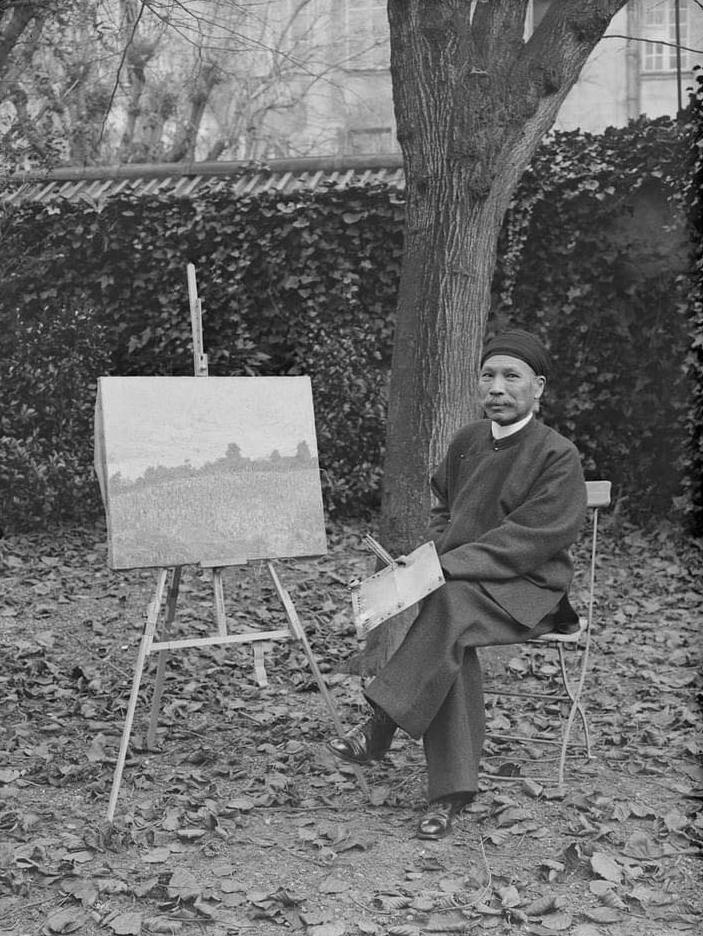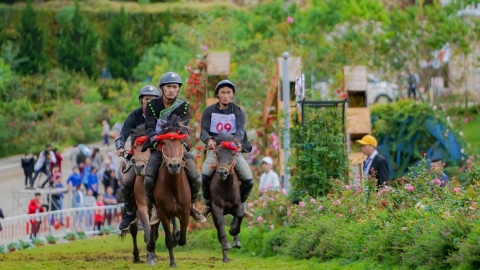People with meritrebuildThe artist who portrayed King Ham Nghi is Ms. Amandine Dabat - a PhD student in Vietnamese art history at Sorbonne University - Paris IV. Notably, she is the fifth generation descendant of King Ham Nghi in France.
The Vietnamese king lived a life of exile
History shows that King Ham Nghi (1871-1943), whose real name was Nguyen Phuc Ung Lich, was the 8th Emperor of the Nguyen Dynasty. He was enthroned when he was only 13 years old. He was one of three Nguyen Dynasty kings honored by history for their patriotism in fighting against the French invaders: Ham Nghi, Thanh Thai, and Duy Tan. After three years of raising the flag of the Can Vuong uprising, he was betrayed and captured by the French colonialists and exiled to the capital of Algeria (French) in 1888.
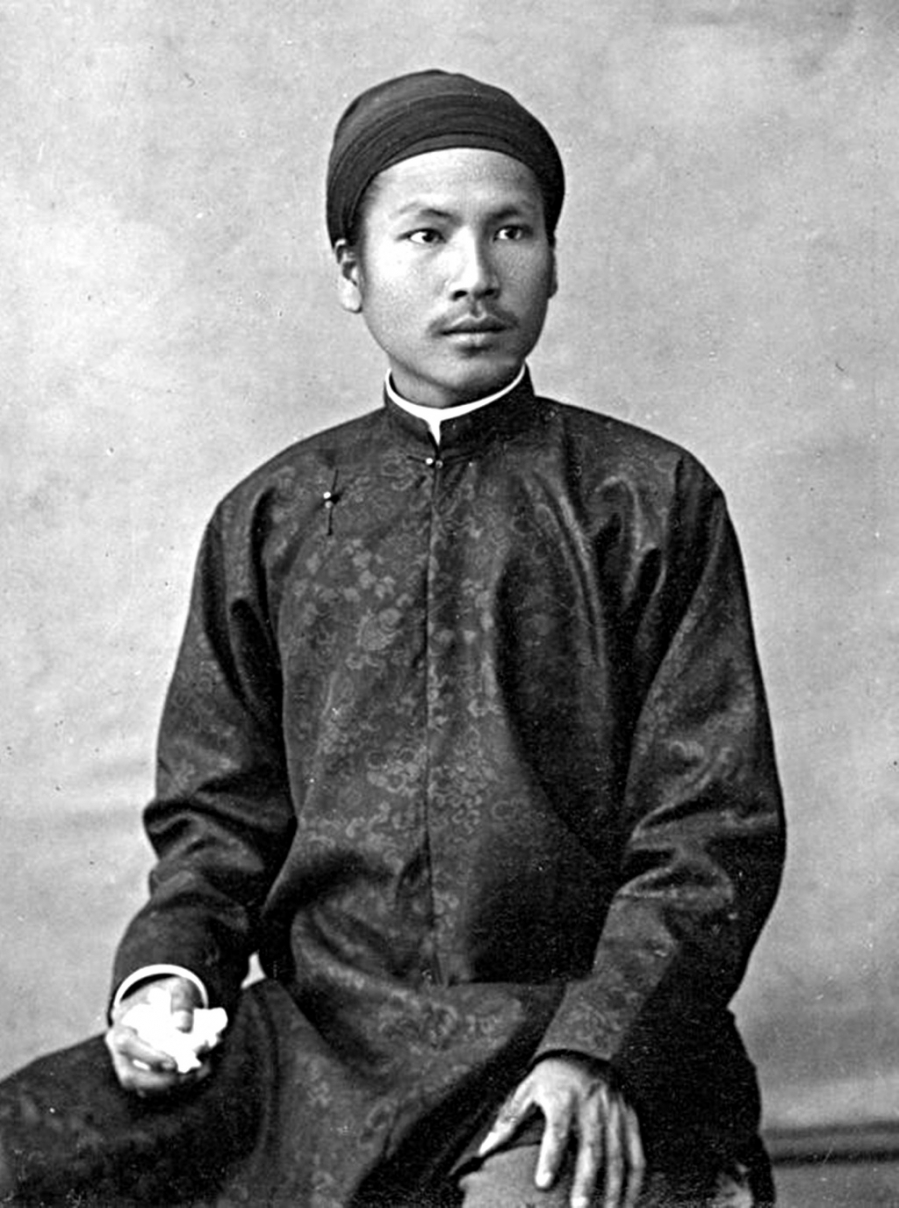
King Ham Nghi (1871-1943).
Being imprisoned in a faraway land, living sadly in the Villa des Pins (in El Biar village), the young former king still kept the Vietnamese way of dressing and living, refusing to learn French, because he considered it the language of the enemy who invaded his homeland. However, he eventually realized that the French in Algeria were kinder than the French in Vietnam and also due to the need to communicate, he gradually learned and spoke and wrote French fluently.
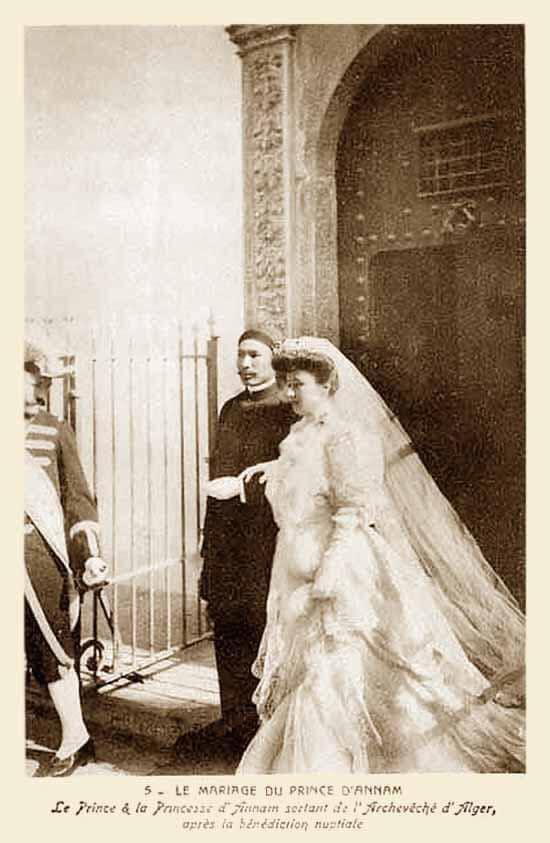
Wedding of King Ham Nghi and Mrs. Marcelle Laloe.
By 1904, 15 years after being exiled to Algeria, Ham Nghi married Marcelle Laloe in Alger and gave birth to three children: two princesses Nhu Mai and Nhu Ly and prince Minh Duc. King Ham Nghi became the first king of the Nguyen Dynasty, and also the first king in the history of feudal Vietnam to marry a Western woman.
During his exile, he studied Western painting and sculpture techniques. Archives and a few surviving works reflect this period in the king's life, which is little known today.
Solitude makes the artist
Ham Nghi was one of the first two Vietnamese painters in the Western style.
To the art world, former emperor Ham Nghi, with his stage name Tu Xuan, was a true artist with a great passion for painting and achievements, and he did not simply use paintings to distract himself from the years of exile.
The former king's journey to art was also quite special. He did not show any artistic talent. In 1899, from Algiers, he went to Paris and was delighted to see an exhibition of the famous painter Paul Gauguin, which ignited his love for painting. And from then on, he gradually immersed himself in colors. The person who taught him painting directly for 15 years was the French painter - Marius Reynaud, who lived in Algeria.

Port Blanc landscape in Saint Lunaire (France), painted in 1912 (oil on canvas).
The themes of the king's paintings are mainly landscapes and still lifes. Ham Nghi's paintings use Western techniques but blend the spirit of Eastern culture, his birthplace, with familiar images such as fields, trees, fruits, and storks and herons at sunset. That helps him relieve his nostalgia for his homeland and is also the soul that makes his works different.
His paintings were influenced by French and European impressionism, but the colors in his paintings were less bright, tinged with gloom and sadness, with very few human figures, as if to express the mood of a fallen king.
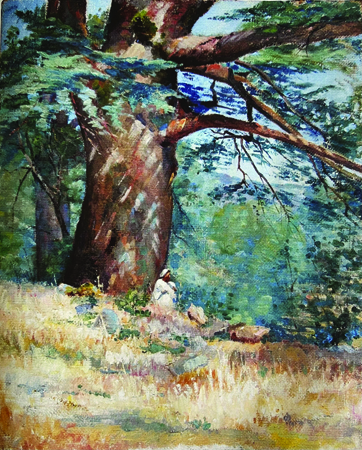

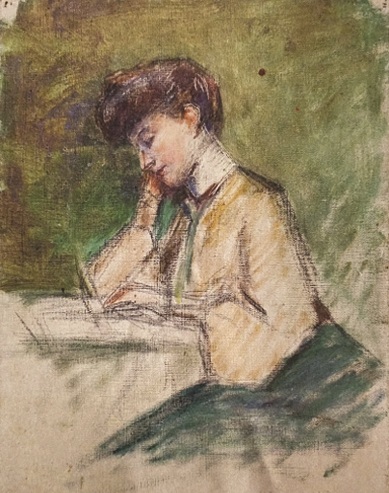


Painting is also a bridge for the king to express his attachment to his homeland Vietnam.
The most prominent of his painting heritage is “Chieu tau”, created in 1915. Thanks to the auction of this painting in Paris on November 24, 2010, the Vietnamese public learned about King Ham Nghi as a painter. Before that, his paintings had never been published or introduced to the public because during his lifetime, King Ham Nghi considered art a field for him to express his feelings and share with friends and relatives. His paintings were not sold but were given to close friends. After his house burned down during the war in Algeria in 1962, most of his paintings were lost, to date there are only less than 100 works left.

The painting "Sunset" was auctioned in Paris in 2010 for 8,800 EUR.
King Ham Nghi’s regular trips to France were always an opportunity for him to visit art galleries and meet French artists. From 1904, he studied sculpture with the great sculptor August Rodin. He carved female figurines and female and male busts. People came to sit for him in the workshop at El Biar when he was not studying with the famous master.
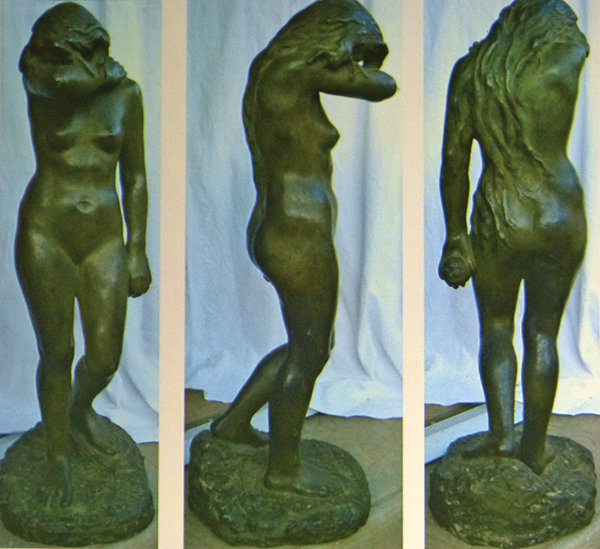
The statue of Eve was sculpted in bronze in 1925, depicting a nude woman with her head resting on her bent right arm, holding an apple in her left hand, and her hair flowing down her back. The statue is said to partly represent the king's sadness at the loss of his country.
Ham Nghi’s taste in sculpture and choice of subject matter was at odds with his approach to painting, as most of his oil paintings were devoid of people. When figures were present, they were obscured, as if to emphasize loneliness. While his paintings were all landscapes, his sculptures were all human figures.
The contrast between the king's oil paintings and sculptures represents the distinction between two worlds: the world of fantasy and nostalgia reflected in the artist's inner self through oil paintings, and the real world of the people gathered around the artist, expressed through the use of three-dimensional space.
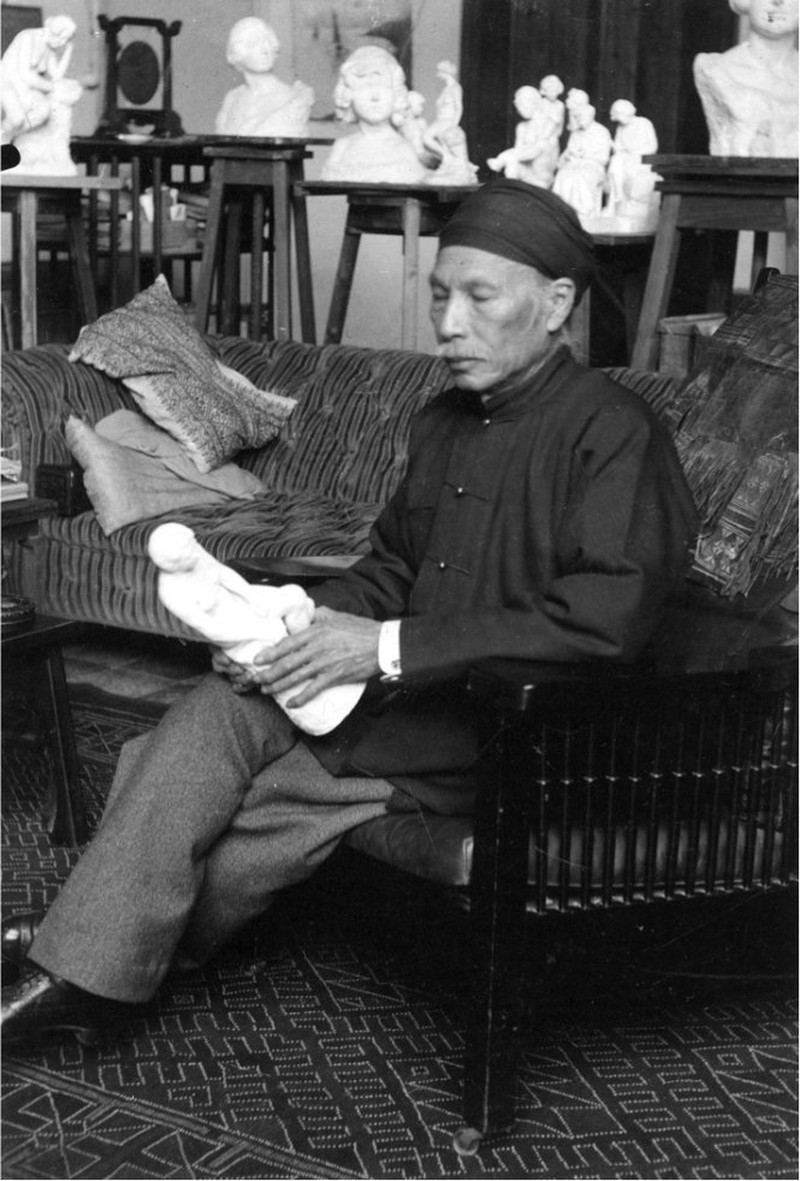
Strangely, more than half a century after the death of former Emperor Ham Nghi, people only vaguely knew that he had painted and carved statues. Information about his works was only known through the letters he exchanged with friends, especially the catalogue of his 1926 solo exhibition in Paris under the pen name Tu Xuan.
CULTURAL PRIDE THROUGH SIGNATURE: TU XUAN
Why did Ham Nghi sometimes sign his paintings as Tu Xuan, and not Xuan Tu like his original name from childhood? He signed his name in Vietnamese very clearly but without accents, in the French style: Tu Xuan.
According to Amandine Dabat, when he fought against the French and was exiled, Ham Nghi had not yet approached the national language and only used French and Chinese characters. Later, Vietnamese people who went to France to study taught the former emperor the national language and he used it to sign his works.
Doctor of literature Tran Hoai Anh believes that the fact that Ham Nghi wrote his name according to Vietnamese grammar, not Chinese grammar, shows the patriotic king's desire for cultural independence.
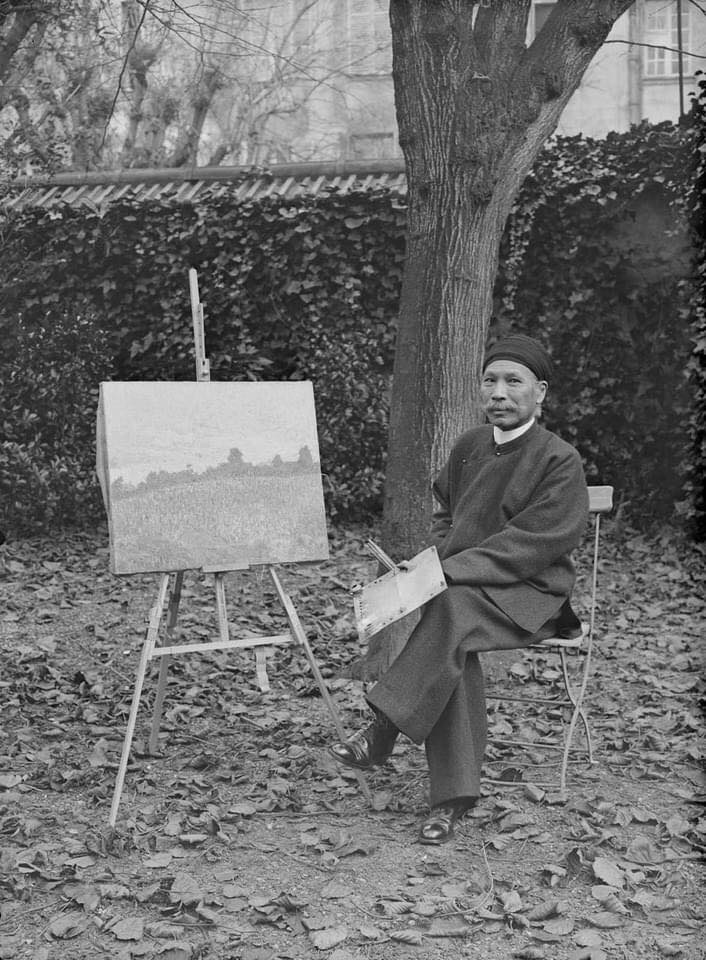
King Ham Nghi devoted all his heart to art during his exile.
In addition, the signature Tu Xuan, Xuan Tu also means "Child of Spring", as a hidden message of resistance and stripping the title "Prince of Annam" that France had given to the former king. Poet Judith Gautier wrote a poem for her close friend with the pen name Tu Xuan, in which there are verses that imply the king's spirit of resistance:
Purple Spring! Oh! Your flowers have just bloomed!
Has fallen apart in the fierce storm
Smash, just once, hope and roses
Overthrow the golden palace built of sandalwood…
Ham Nghi’s exile was an opportunity for him to discover and develop his artistic talent. The deposed king became a passionate but quiet artist, whose work is little known. In fact, Ham Nghi’s work can only be understood in the context of his life as a political exile.
The king’s works are at the intersection of Vietnamese and French cultures. However, it is strange that it took more than half a century for his valuable works to be discovered. They still move us, surpassing all national, ethnic or school expressions. Is this the fundamental premise to determine a worthy place for the king-artist Ham Nghi in the history of our country’s art?
Amandine Dabat - the artist who recreated the portrait of King Ham Nghi
- Amandine Dabat (1985), is the great-great-granddaughter of King Ham Nghi. Anne Dabat, her grandmother, is the daughter of Princess Nhu Y, the second child of the king. She was born and raised in France, but spent her youth learning about her roots and decided to choose the topic of her doctoral thesis on the life and artistic aspects of King Ham Nghi as a painter.
- During a return to Vietnam to attend a conference with the theme "King Ham Nghi: An Artist's Life", organized by the French Cultural and Cooperation Center in Ho Chi Minh City, Amandie - the fifth generation descendant of King Ham Nghi, played the role of speaker.
- With her profound and objective knowledge, she has helped to shed light on many interesting surprises about the king with the soul of an artist. She has introduced the artistic life of King Ham Nghi, which is almost unknown, and outlined his journey to art during his exile.
- As researcher Nguyen Dac Xuan commented: “Amandine’s doctoral thesis studies the entire artistic life of King Ham Nghi. Ham Nghi was a painter, Ham Nghi was a sculptor, and Ham Nghi was a photographer. When this thesis is completed, along with Le Van Mien, King Ham Nghi will be confirmed as one of the first two Vietnamese artists to paint and sculpt in the Western style.”





